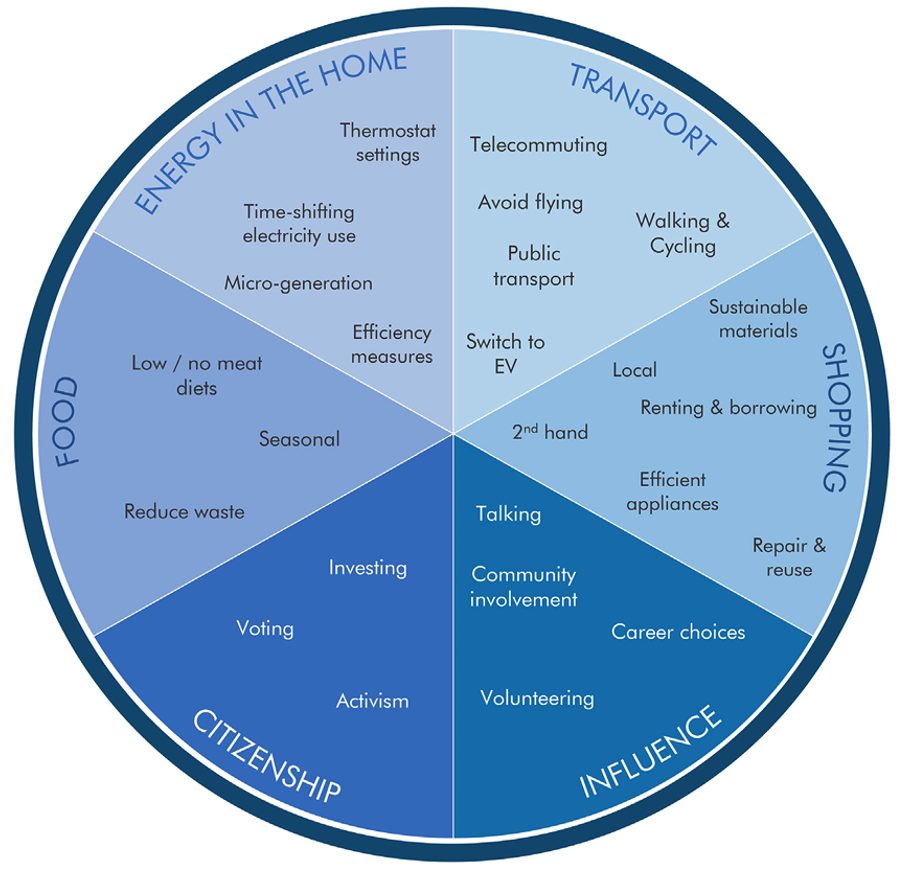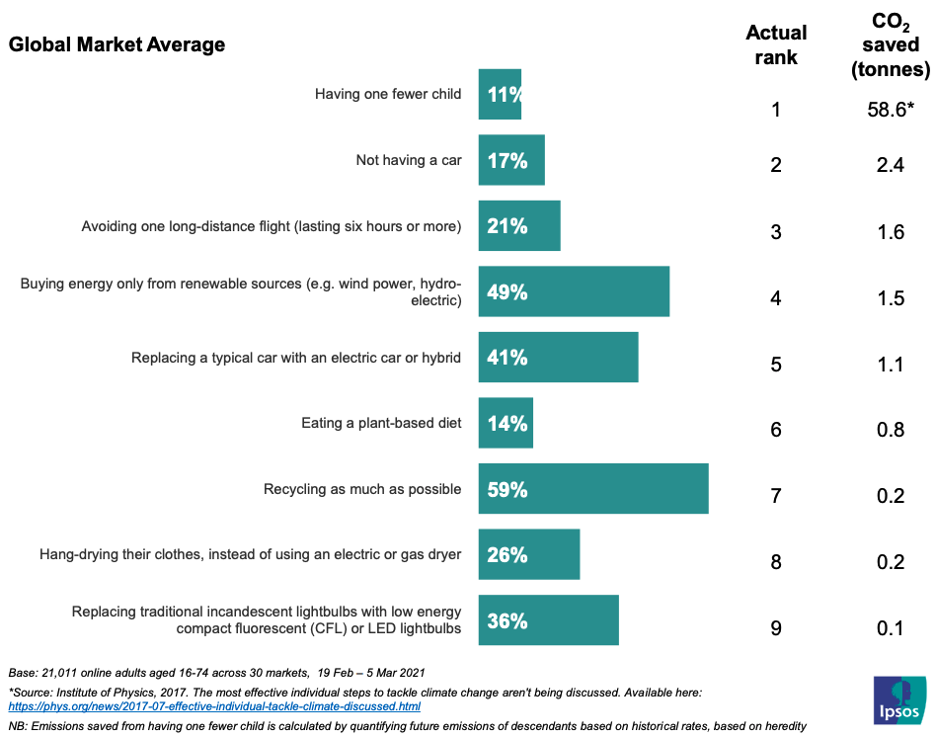Energy Innovation partners with the independent nonprofit Aspen Global Change Institute (AGCI) to provide climate and energy research updates. The research synopsis below comes from Emily Jack-Scott, Program Director at Aspen Global Change Institute.

Global leaders met in Davos earlier in January to engage in cross-cutting discussions about the world’s most pressing challenges and to debate the merits of various solutions. After another year of climate extremes, it’s little surprise that abnormal weather and climate change are a central focus of the summit.
Structural change through policies and governance is necessary to solve the climate crisis at the speed and scale required. But high level decision-makers are not the only ones with the power to reduce emissions. The choices that we all make every day as individuals are also critical.
But often, we feel at a loss when it comes to taking individual action. What can I do? What difference can I possibly make? Recent research sheds light on the common barriers we face when making choices that can reduce carbon emissions and the many ways one person really can make a difference.
A disconnect between concern and action
Over 70 percent of Americans describe themselves as cautious, concerned, or alarmed about climate change. But many people experience a disconnect between their individual worries and their confidence to take action. A recent analysis led by Carl Latkin in the Journal of Prevention details the most common barriers that concerned Americans report when it comes to walking the talk of climate activism.
Even when survey respondents described climate change as very or extremely important to them, less than a third reported signing petitions (32 percent), contacting elected officials (12 percent), and donating money to (30 percent) or volunteering with (9 percent) organizations working to reduce climate change. The only climate action that the majority (69 percent) of very concerned citizens reported was voting for candidates who support mitigation measures.
Some top reasons people report for not taking action on climate change include not being asked (50 percent), not knowing how to get involved (50 percent), and viewing activities like letter writing as unappealing (50 percent). Less common reasons include not wanting to be asked to donate (40 percent), being too busy (39 percent), not being encouraged to act (38 percent), and feeling like what they are capable of doing won’t make a difference (31 percent).
But the number one reason that the majority of concerned Americans gave for their lack of involvement was that they felt undertrained and that someone else could do it better (57 percent).
What one person can do
A newly published review in the journal One Earth by authors Sam Hampton and Lorraine Whitmash beautifully illustrates the many direct and indirect ways we can each take climate action (Figure 1). Their holistic view encourages us to imagine what climate action can look like in our daily lives and can help us break through the feeling that “someone else can do this better than me.”

The authors break down climate action into six categories: food, energy in the home, transport, shopping, influence, and citizenship. We each have the power to make wise choices in each of these domains, though a combination of influences also shape our decisions, including our values, cultural norms, level of education, peer pressure, strength of our social networks, financial well-being, access to green infrastructure, and our freedom to engage in political action.
When it comes to our diets, for example, we may know that reducing or eliminating meat (especially red meat) will help reduce our emissions, but whether we choose a more plant-forward diet is heavily influenced by our cultural traditions, upbringing, and the availability of vegetarian options at nearby restaurants or friends and families’ houses.
Similarly, when it comes to changing our home energy consumption by investing in efficiency improvements or renewable sources, our income levels and access to information about tax incentives have a big influence on our choices.
But herein lies the real power of individual action. When we can make choices that reduce emissions and dare to talk about those choices, we not only directly reduce our emissions, but indirectly influence others.
But what difference does it make?
We each make choices every day that can reduce emissions, and some have a bigger impact than we may realize. Often the most impactful choices depend on our lifestyle. As more people choose to substitute white meat or seafood for red meat, switch to electrical vehicles and heat pumps, take public transportation, or shop for second-hand goods, our choices increasingly become a new norm.
And when we talk with people within and beyond our social circles about why we made those choices, they can become an influence in their own right. These casual climate conversations can help build much-needed climate literacy because there is a stark disconnect for most people between actions they perceive as climate-friendly and what actually reduces significant emissions (Figure 2).

A 2021 Ipsos poll found that nearly 60 percent of respondents thought recycling was the most effective way to reduce emissions in high-income countries. In actuality, the emissions savings from avoiding one long distance flight or buying renewable energy is eight times greater than recycling. Very few respondents even realized that their dietary choices or decision whether to have children had any significant impact on their carbon footprint.
Our choices in the domains of food, home energy, transport, and shopping translate into the indirect power we wield through influencing friends, family, and neighbors. Normalizing direct actions that reduce emissions inspires our peers and catalyzes political momentum. And while not all of our actions have a direct economic impact, the ones that do send strong market signals to business leaders who will respond to meet demand.
We are not all socially inclined, financially able, or geographically positioned to adopt every climate action in Hampton and Whitmarsh’s diagram (Figure 1). But the direct and indirect impacts of any climate-friendly choices we are able to make have a huge ripple effect in the kinds of dialogues happening among our friends and peers, and among business and government leaders farther away.
Featured Research
Hampton, S. and Whitmarsh, L., 2023. Choices for climate action: A review of the multiple roles individuals play. One Earth, 6(9), pp.1157-1172.
Latkin, C., Dayton, L., Bonneau, H., Bhaktaram, A., Ross, J., Pugel, J. and Latshaw, M.W., 2023. Perceived barriers to climate change activism behaviors in the United States among individuals highly concerned about climate change. Journal of Prevention, 44(4), pp.389-407.